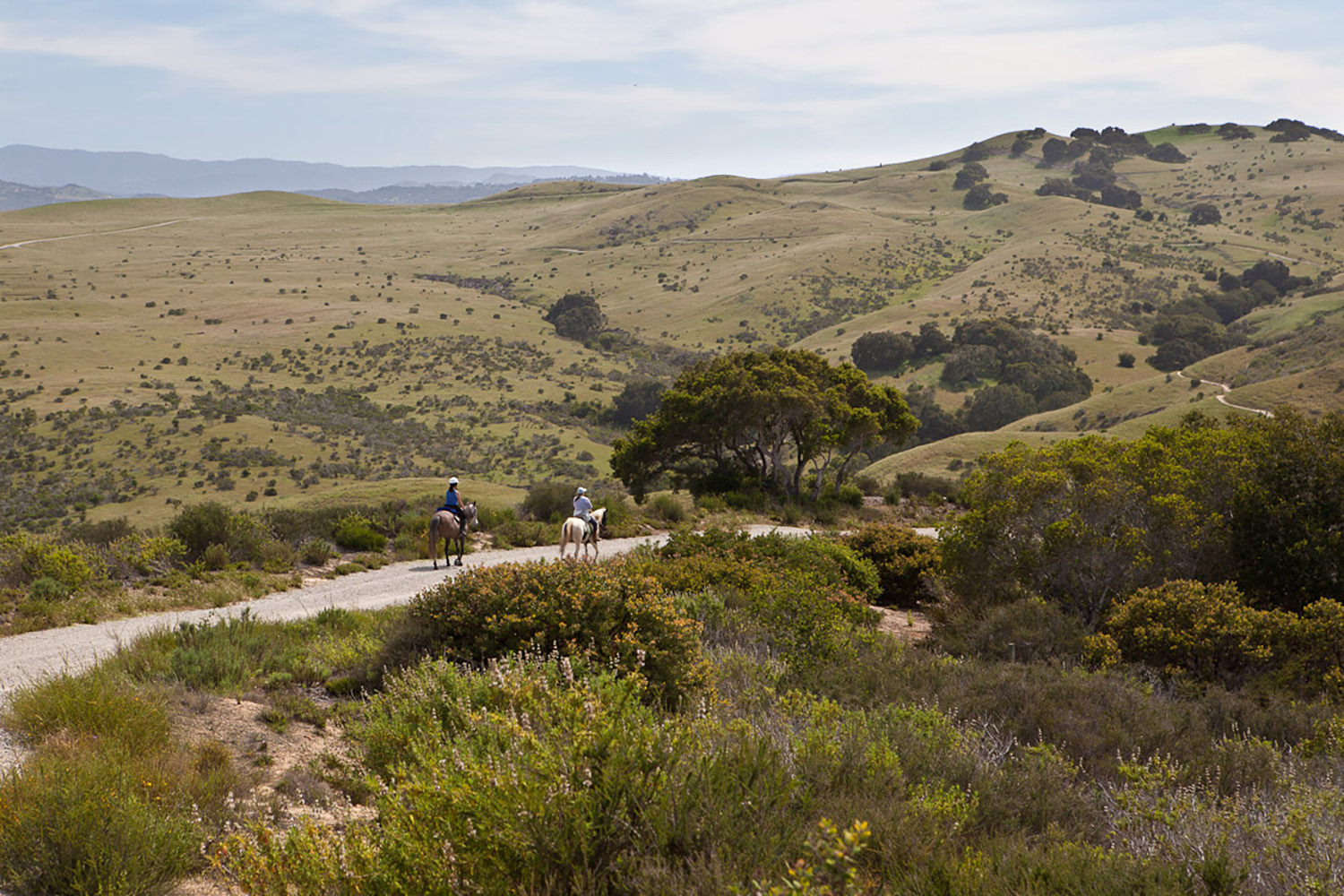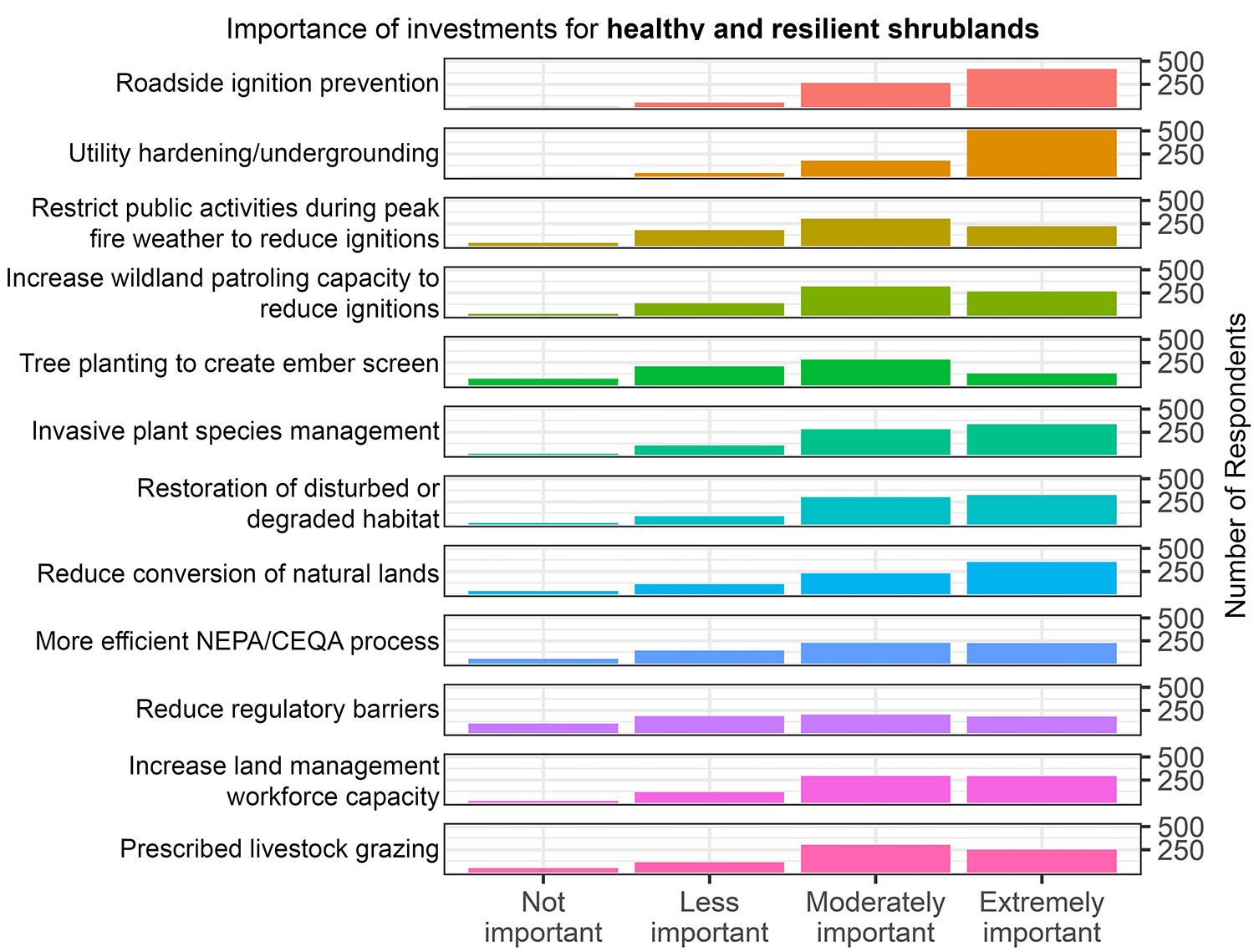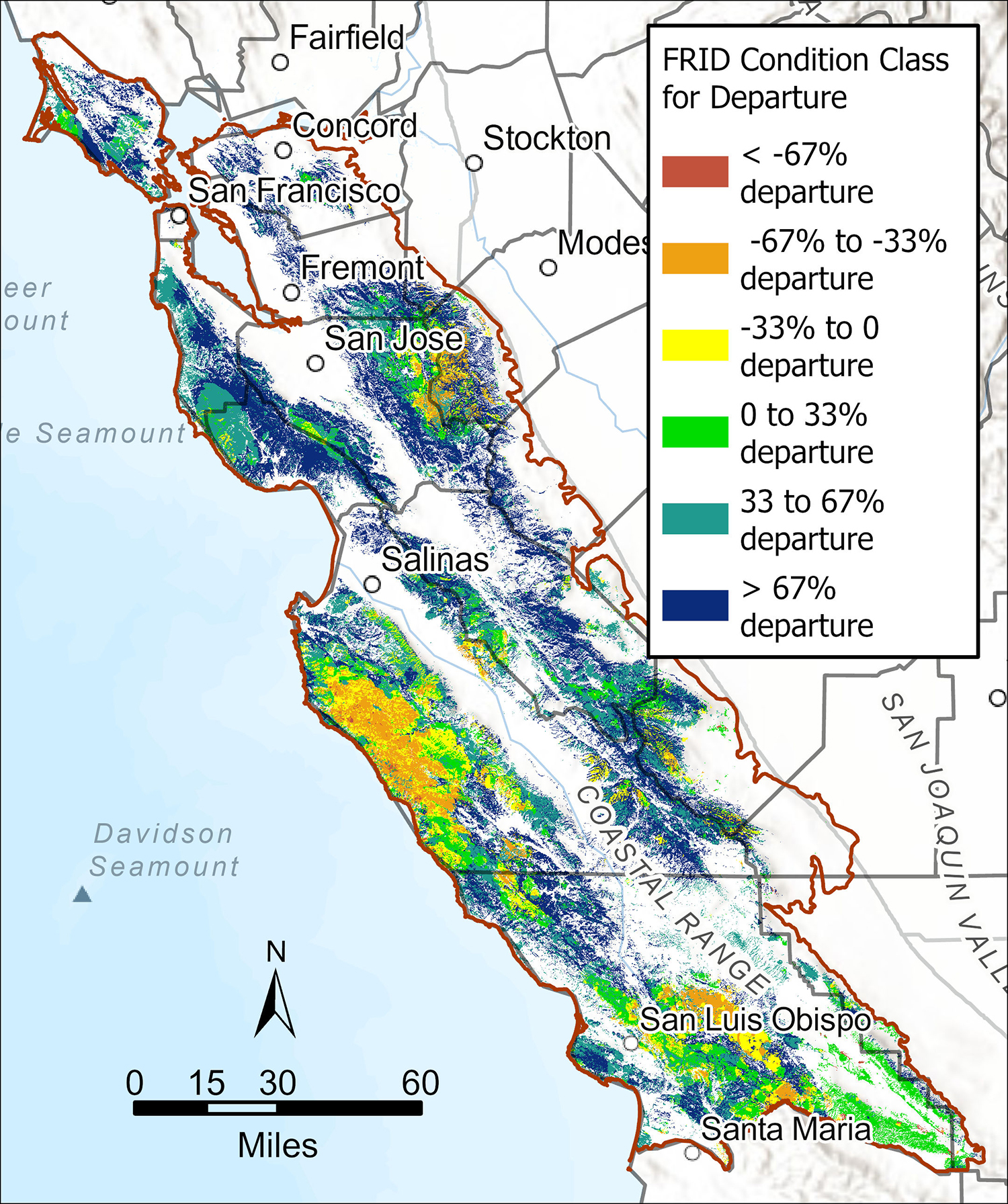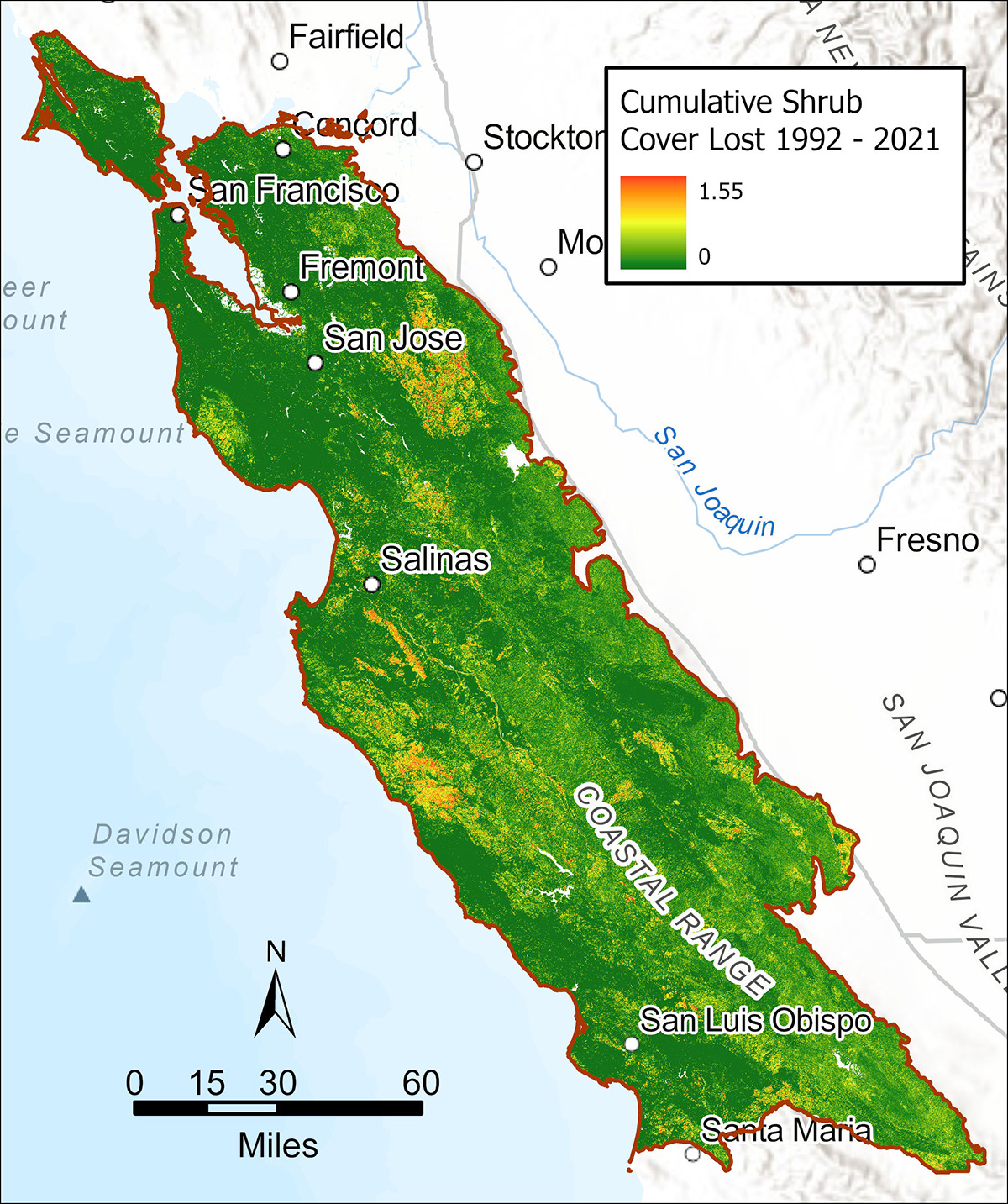Central Coast Regional Profile
HEALTHY & RESILIENT GRASSLANDS & SHRUBLANDS

photo credit: Bob Wick, BLM
Overview
Grasslands cover 41% of the Central Coast region, while shrubland ecosystems cover 18%. Most of the region’s grasslands have been highly disturbed by human activities, especially agriculture, and are now almost entirely dominated by non-native annual grasses and forbs. In contrast, less than 1% of grassland cover in the region is coastal prairie, a native perennial grassland that grows along the Pacific coast from Southern California to Southern Oregon. Many of the native coastal prairie species are adapted to use fogwater, which gives them a competitive advantage over exotic annual species. This highly-endangered ecosystem relies on disturbance for its persistence. Prehistorically, large herbivores were a primary source of disturbance. For at least 1,200 years Indigenous stewardship maintained coastal prairies through cultural burning, which occurred as frequently as every 1 to 5 years.
After Indigenous burning practices were eliminated by European colonization, livestock and wild ungulate grazing continued to maintain coastal prairie, but this ecosystem became increasingly vulnerable to encroachment by other native species such as coyote brush and Douglas fir, which can result in conversion to other habitat types. Much of this ecosystem has also been lost to urban and agricultural development, and there are concerns that coastal prairie will also be vulnerable to climate change, especially if summer fog frequency declines. Current efforts to conserve coastal prairie include applying prescribed grazing, prescribed fire, and mechanical treatments to remove encroaching conifers, shrubs, and exotic species and to promote native species.
Another endangered ecosystem, coastal sage scrub, occurs in similar coastal areas as coastal prairie but its range only extends north to Marin County. Coastal sage scrub will commonly replace coastal prairie in the absence of disturbance. However, coastal sage scrub is also vulnerable to invasive species encroachment, overgrazing, and elevated nitrate levels in soil due to air pollution. Too-frequent fire due to human ignitions can convert coastal sage scrub to non-native grasslands. Activities that clear vegetation to reduce fuels and fire hazard can also negatively impact this ecosystem. Management actions to help restore coastal sage scrub include applying mechanical treatments to reduce invasive species, planting native species, and protecting natural lands from development.
Maritime chaparral is another key shrubland ecosystem along the Central Coast. It is dominated by manzanitas and native wild lilacs (ceanothus) and generally occurs within or near oak woodlands and conifer forests. This vegetation type is fire-dependent because many maritime chaparral species are obligate seeders that require fire to germinate. However, like serotinous pines, the timing of fire return intervals is critical for species regeneration. One study of the federally-listed threatened species Morro manzanita found that a fire return interval as long as 40 years could be too short for maritime chaparral species to build up sufficient seed banks for post-fire recovery. As a result, this rare vegetation community may be further endangered if fire frequency increases because of human ignitions or climate change.
Stakeholder Perspectives

Stakeholders responded that the top priority areas of investment for achieving healthy and resilient shrublands were utility hardening/undergrounding and roadside ignition prevention. Invasive species management, habitat restoration and reducing land conversion were also rated more highly than other areas. Survey respondents rated reducing regulatory barriers and planting trees to create ember screens to be less important than other potential areas of investment.
Interview findings: When asked about the key issues related to ecological resilience to wildfire, many interviewees highlighted the coastal prairie as an important native ecosystem that is critically threatened by the loss of historical disturbance regimes. Several interviewees observed how, in the absence of fire or grazing, coastal prairie is transitioning to relatively homogeneous shrubland dominated by coyotebrush then to Douglas fir forests. However, because fire occurs before the forest can mature and resets the land cover to coyotebrush, these ecosystems do not support much biodiversity. Interviewees also noted that the shrublands of the Central Coast region differ significantly from Southern California. In Southern California, the loss of chaparral habitat is being driven by too-frequent fire caused by human ignitions. In the Central Coast, chaparral habitat is being lost to conifer encroachment due to lack of fire or other disturbance.
Resource Conditions


Fire Return Interval Departure (FRID) condition class (top) reflects the magnitude and direction of departure from the historical fire return interval on the landscape. A positive FRID value indicates fires are burning less frequently than historical regimes, while negative values indicate fires are burning more frequently than historical regimes. The greater the condition class value, the greater the departure from an area’s historical fire return interval. In coastal Monterey and inland San Luis Obispo Counties, more negative FRID values reflect a significant increase in overly frequent wildfires; whereas in Marin, San Mateo, and Santa Cruz Counties more positive FRID values indicate fires have been burning less frequently than they did historically, in part due to modern suppression of wildfire and disruption of the cultural burning that historically occurred. Cumulative shrub cover loss (bottom) from fires, management, and dieoff is measured as an absolute value. These values range from 0 to 1; values can exceed 1 if multiple disturbances occurred. In the Central Coast, the greatest shrub cover loss is concentrated in eastern Santa Clara County and central Monterey County.
